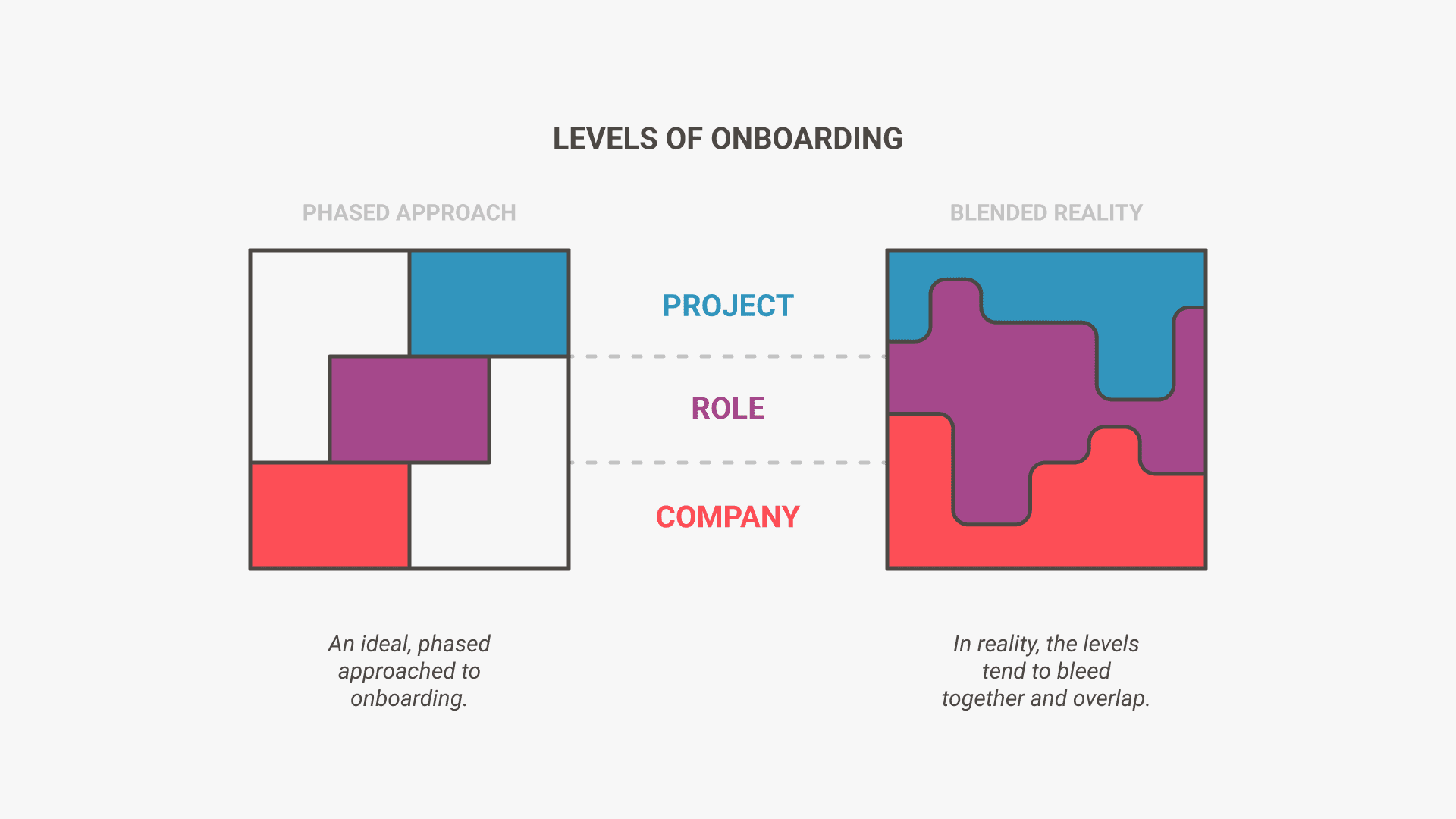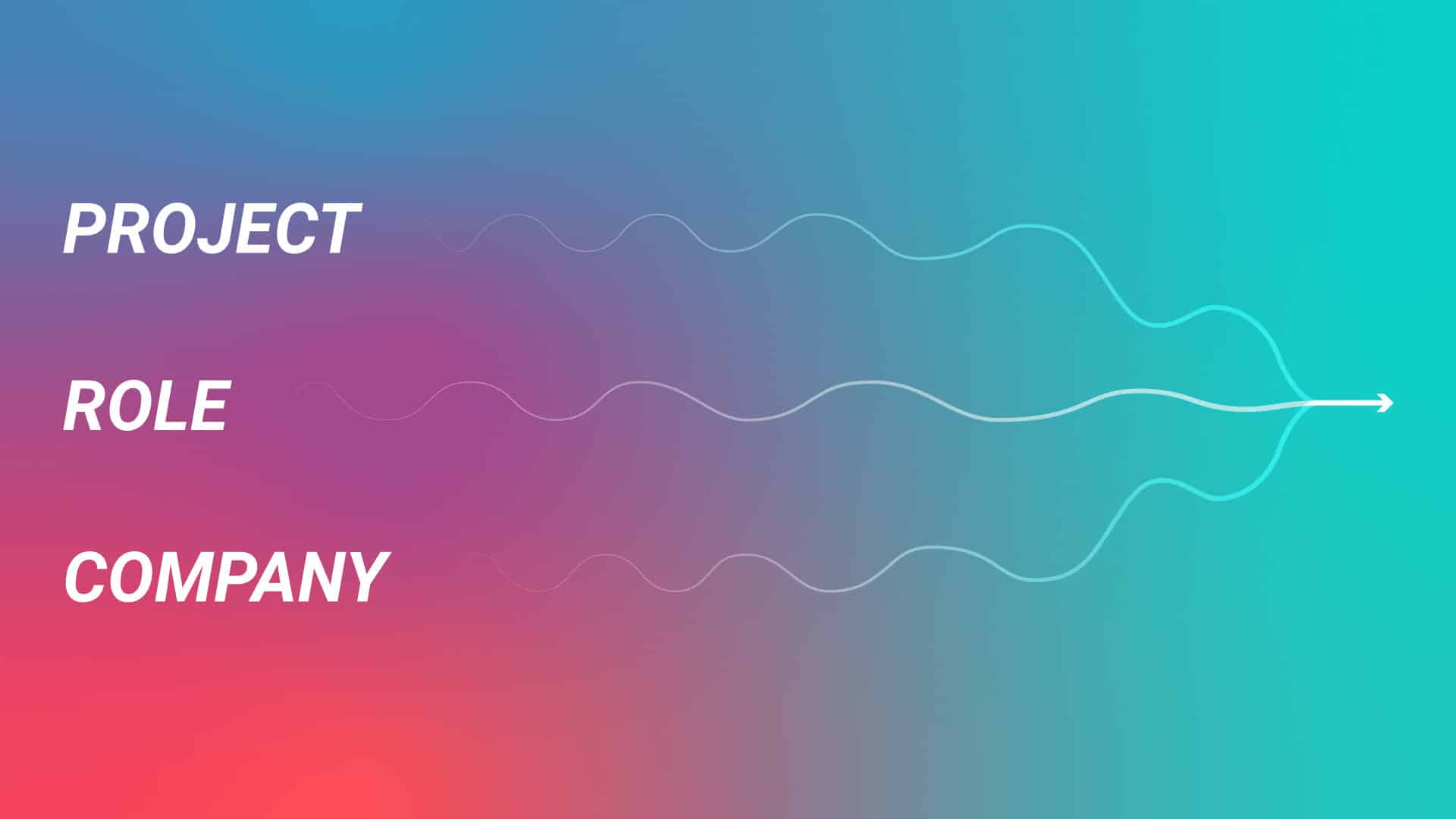I recently completed my first year at Atomic. Since joining, I have been onboarded at different levels and have helped others do the same, often reflecting throughout those experiences. In my first Spin post, I shared my perspective on the onboarding experience, arguing that it isn’t a simple process manageable with a checklist. At that time, I realized that the experience plays out in multiple dimensions. When starting a new job, one must onboard to numerous levels, at varying velocities, and within different contexts.
I still feel that onboarding is a multidimensional experience, so I wanted to unpack further what that means.

The Levels
It’s vital to get onboarding right, and it’s often challenging for everyone involved. There is a lot to teach and learn at varying degrees of specificity and with different degrees of relevance to the present (i.e., what is required of me in my new role today versus opportunities for growth in the future). In your first 30-90 days, you will need to understand some foundational functions of the organization, the responsibilities of your role, and how your position delivers value to a project. It often feels like drinking from the fire hose, but there are ways to break down the information for greater coherence and retention.
Some information, like your email address or the company’s mission and vision, will remain constant. You won’t need to continually revisit this over time. Other aspects of onboarding will be fluid and subject to evolving, like tools you might use to do your job or the project you’re working on. You’ll need to revisit this information and either re-teach or re-learn it constantly. I have found it beneficial to identify the different levels of onboarding to understand where you’re at in the overall journey:
- Company & Office
- Role & Practice
- Project & Client

The Company & Office
It’s logical to start with the company-level onboarding experience, as it is usually the first door to unlock. These essentials can range from understanding benefits to accessing email and even locking up at the end of the day. It’s what we typically associate with onboarding, as it’s often only needed for new employees at the beginning of their journey. It is an unavoidable, foundational aspect of the experience.
Remember that you won’t need much of this information regularly, nor will you likely alter it. These are established aspects of the organization; unless somebody hired you to improve them, this information would feel routine after a while (and that’s okay). Prolonging this part of the experience by stretching the onboarding timeline will help you retain the information and understand what’s essential. Focus on what you need now, and rely on good documentation to reference things you need later. Don’t try to remember it all – this is only the beginning.
This dimension also sets a precedent for onboarding to your role and project(s). You’ll need this as a baseline to do your work successfully, but it shouldn’t entirely block you from moving forward. Ideally, somebody should acquaint new hires with the company basics before they can fulfill their role or become successful team members. For example, they should understand the company’s values to deploy them in their position and on their project, but they don’t need to know the organization’s financial structure in their first month.
The Role & Practice
While onboarding to the company is critical to a new hire’s success, it’s only one piece of the puzzle and often not the most time-sensitive one. Onboarding to the role one fulfills in that company is paramount to that person’s success and is likely what feels most urgent. Essentially, this is why they are joining the company in the first place and how they will add value to it over time.
A new hire will know the role’s general responsibilities and expectations, but it’s fair to say they’ll have many questions about what that looks like in reality. The onboarding process may be less standardized or defined at this level but will evolve. You could continue to onboard and grow into different aspects of that role well into your second year at the company. Try to reflect on where you are, and understand the different cycles of this level.
You may also be onboarded by someone other than that role, like a manager or colleague from a different department. This may cause some disconnect, and it is all the more important to frame what level the onboarding is happening at. Are you discussing the company or the role? It will also help to layer in support from people in the same position. They shouldn’t have to hold your hand through the experience, but they should be available to coach and support you.
The Project & Client
Lastly, bringing a new hire or new team member onto a project brings it all together. Ramping into a project is the most tactical type of onboarding and the only one that will happen in rapid succession, multiple times. You won’t onboard to the company again, and you may onboard to a different role over time in that company, but you will almost certainly onboard to new projects and new teams over and over again. It is an exciting combination of the company and role onboarding, all applied within a specific context.
The new hire should understand some of the other onboarding levels before flooding them with the project details. What does the new team member need to know right away versus what can they learn over time? How will the onboarding levels overlap? It’s beneficial to start with the project’s objectives before diving into technical requirements. It’s also vital to tie their responsibilities on the project back to their role, making it clear how the levels are connected.
Finally, onboarding a new team member should be a shared responsibility. One person might lead the charge, but every team member should take a hands-on approach to bring their new teammate up to speed. Sharing the responsibility will reduce the burden on one person, reinforce a sense of connectedness across the team, and provide multiple touchpoints for the new team member moving forward.
Know Your Levels
Ideally, these different levels happen in phases. Realistically, however, one has to onboard to different dimensions simultaneously, and that’s why we need a new paradigm for understanding the experience. The onboarding experience gets tricky, as the individual levels can easily blend into one another, especially early on in a new hire’s journey. You might first discuss the company, then shift to the role or project without pause. Ensure the person onboarding and the new team member understand these levels and use a framework to facilitate your discussions.

It’s easy to get through onboarding yourself and not revisit how that went. We should all seek to make onboarding a better experience: how we integrate into a new company, grow into a role, and become valuable team members on a project. Being thoughtful, empathetic, and structured throughout this experience will only lead to positive outcomes and long-term success for everyone involved.

